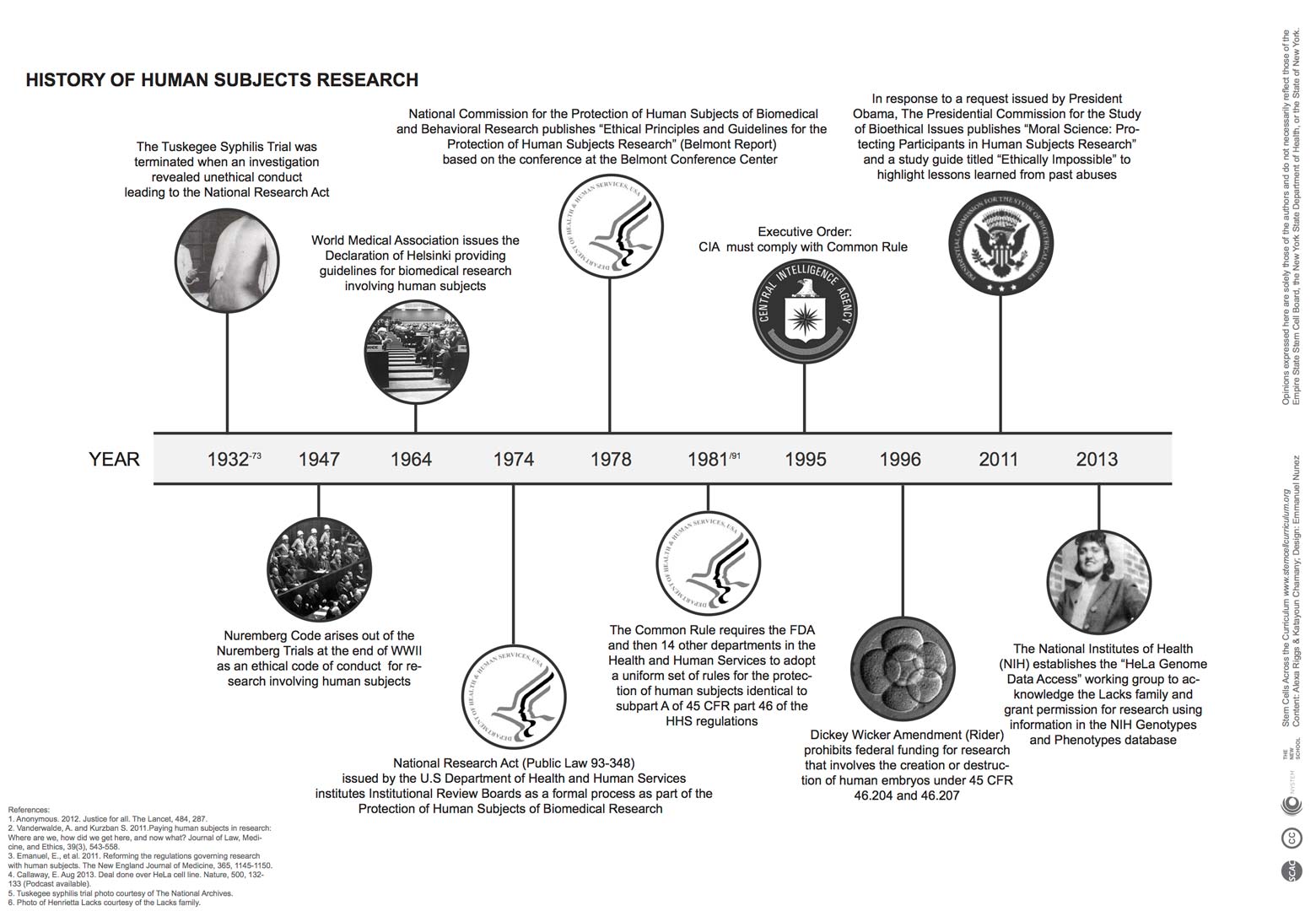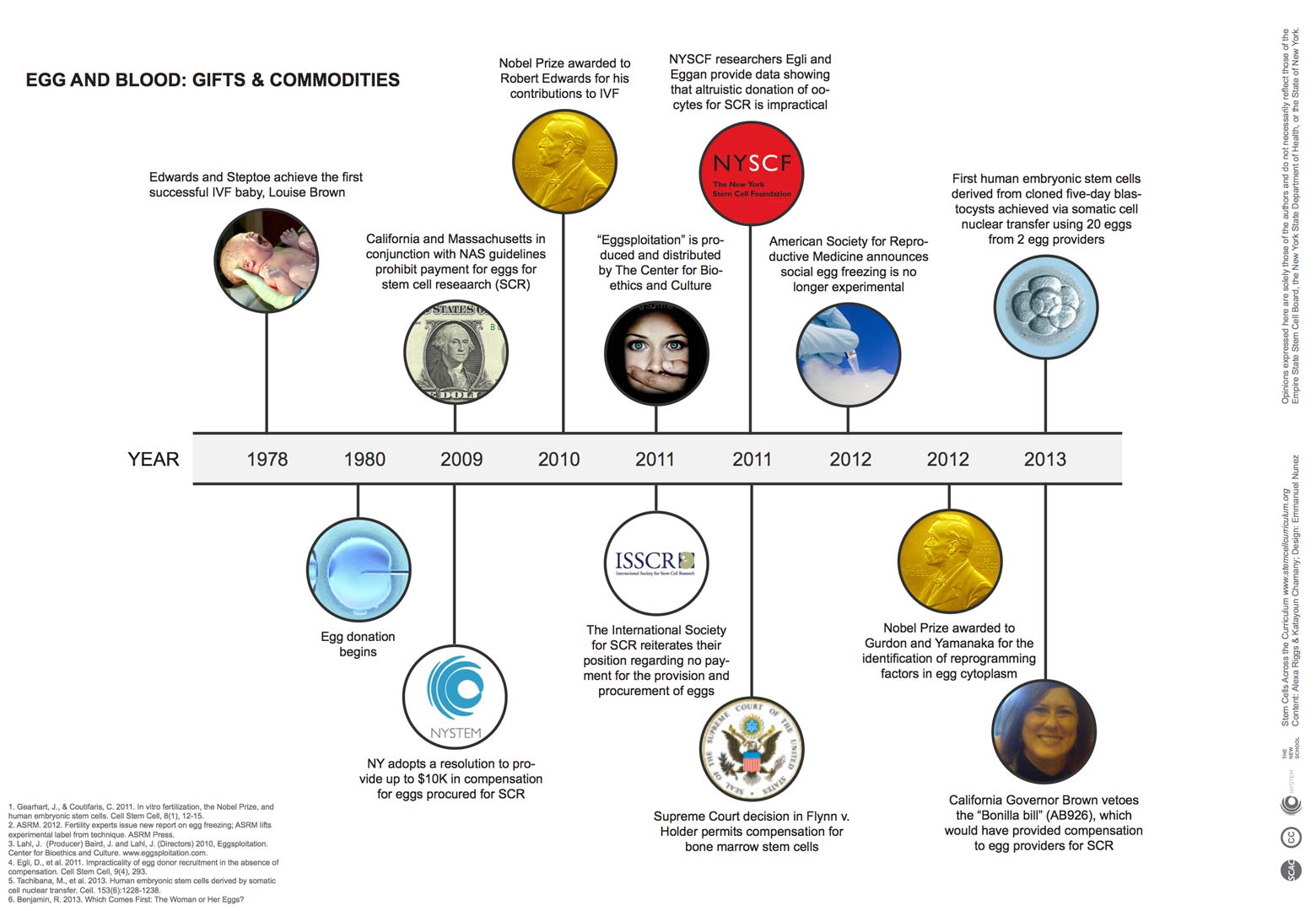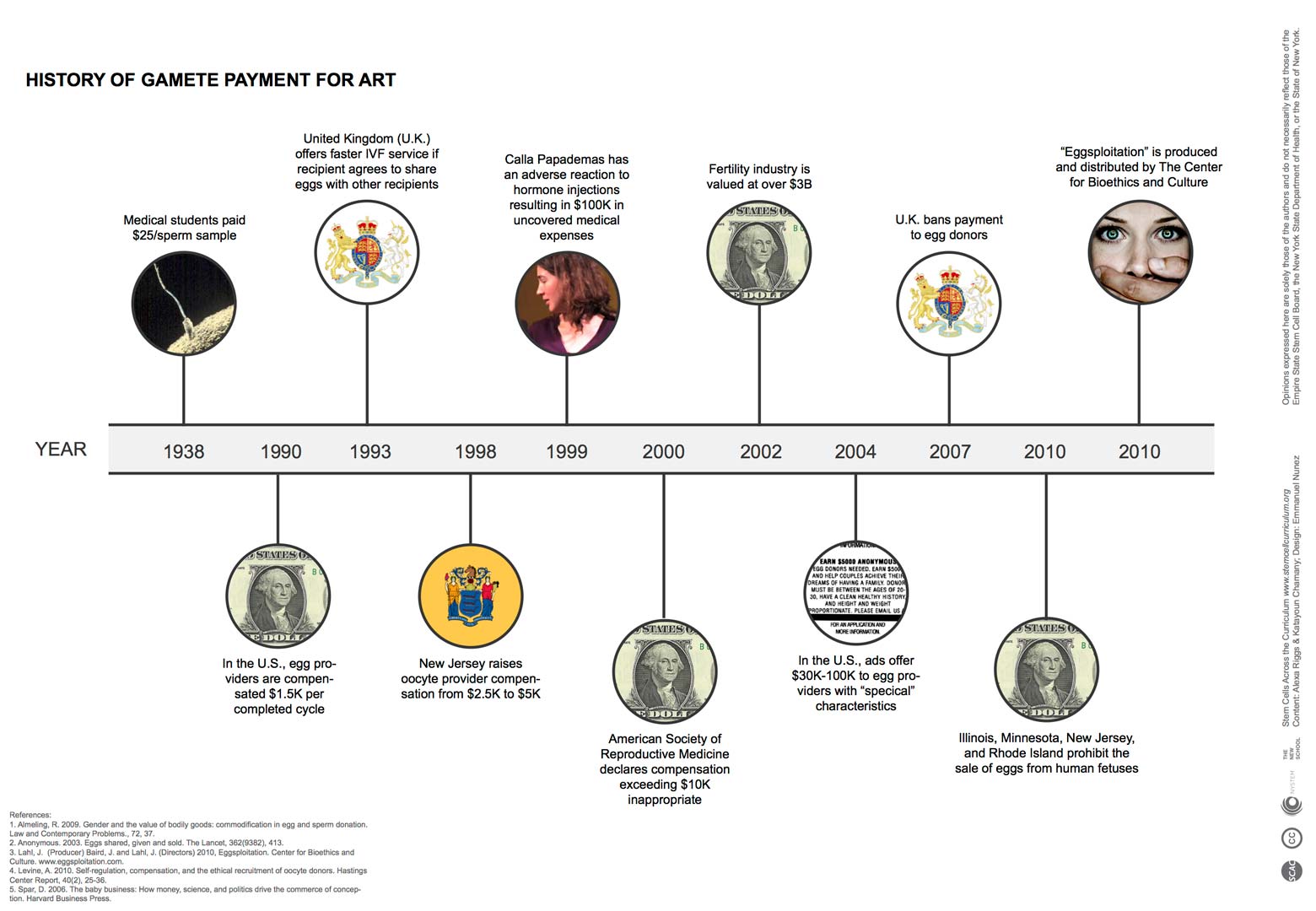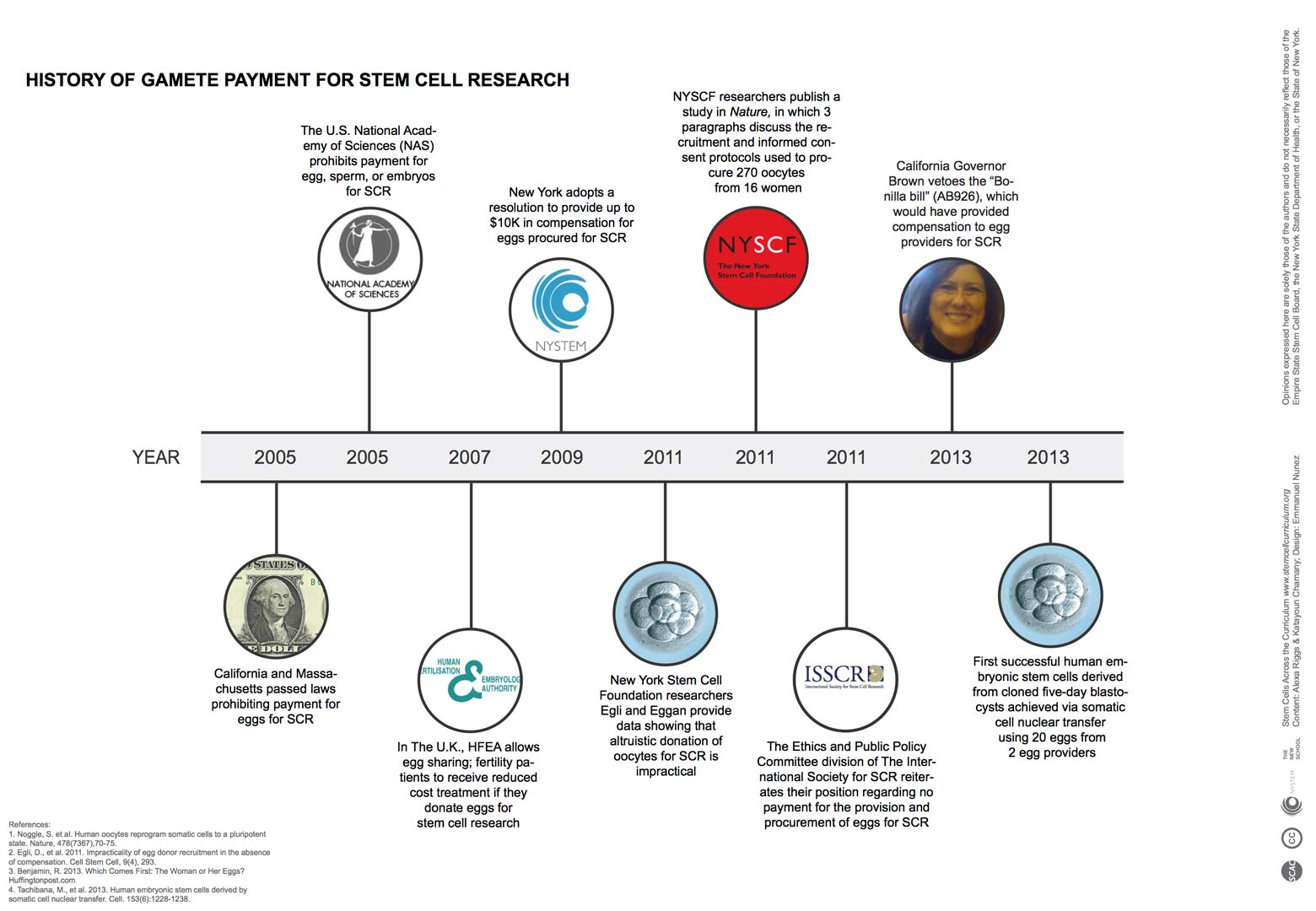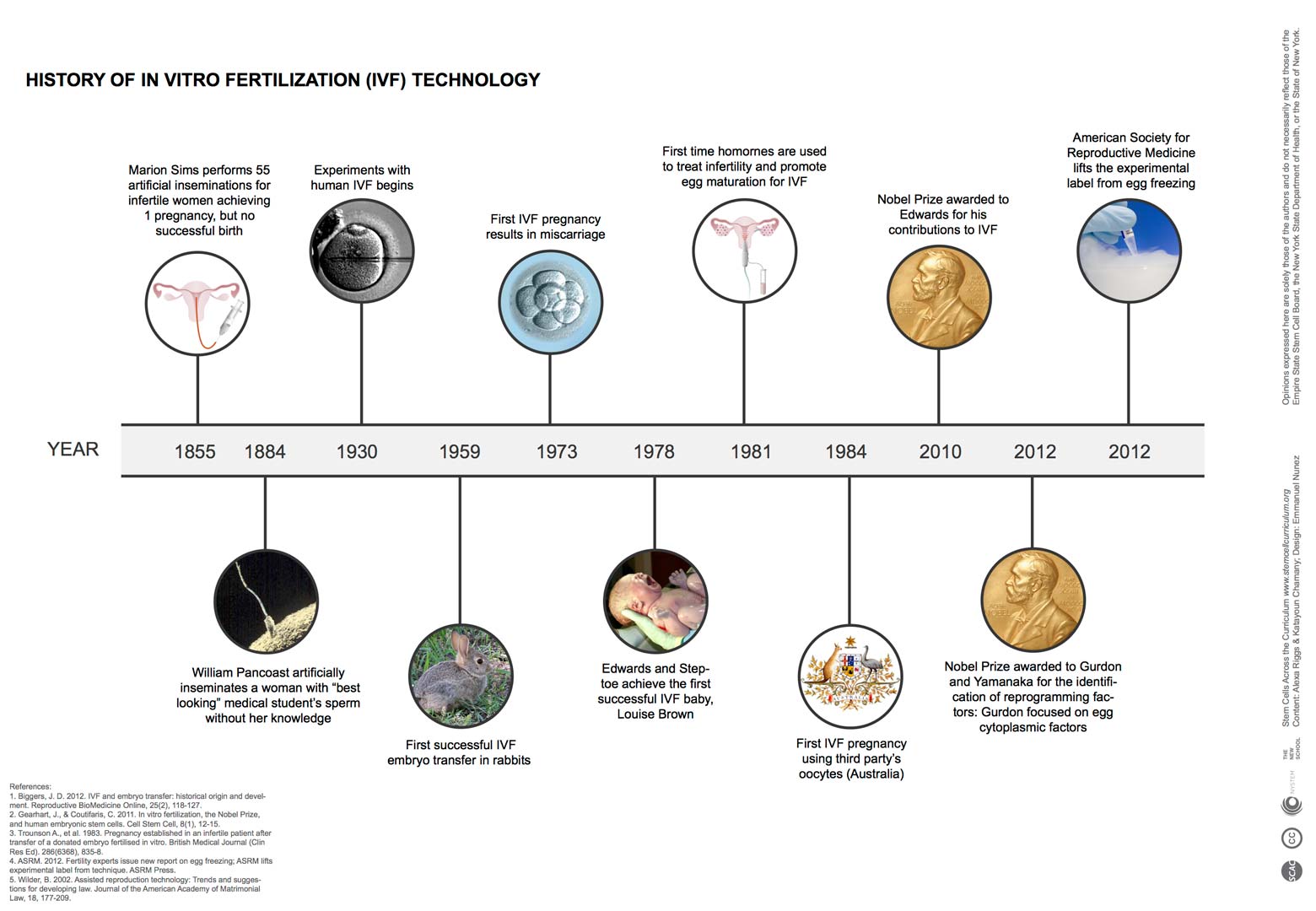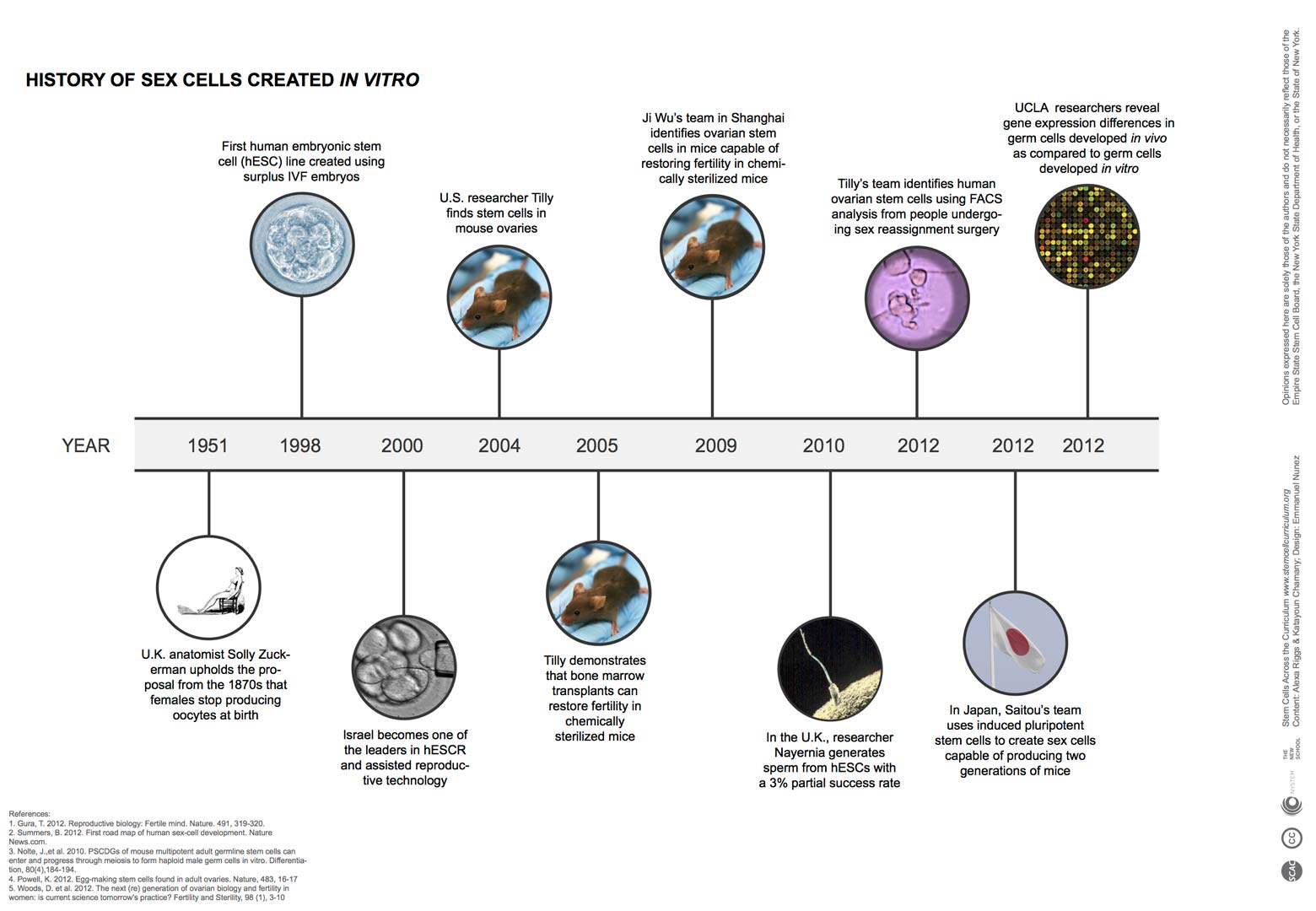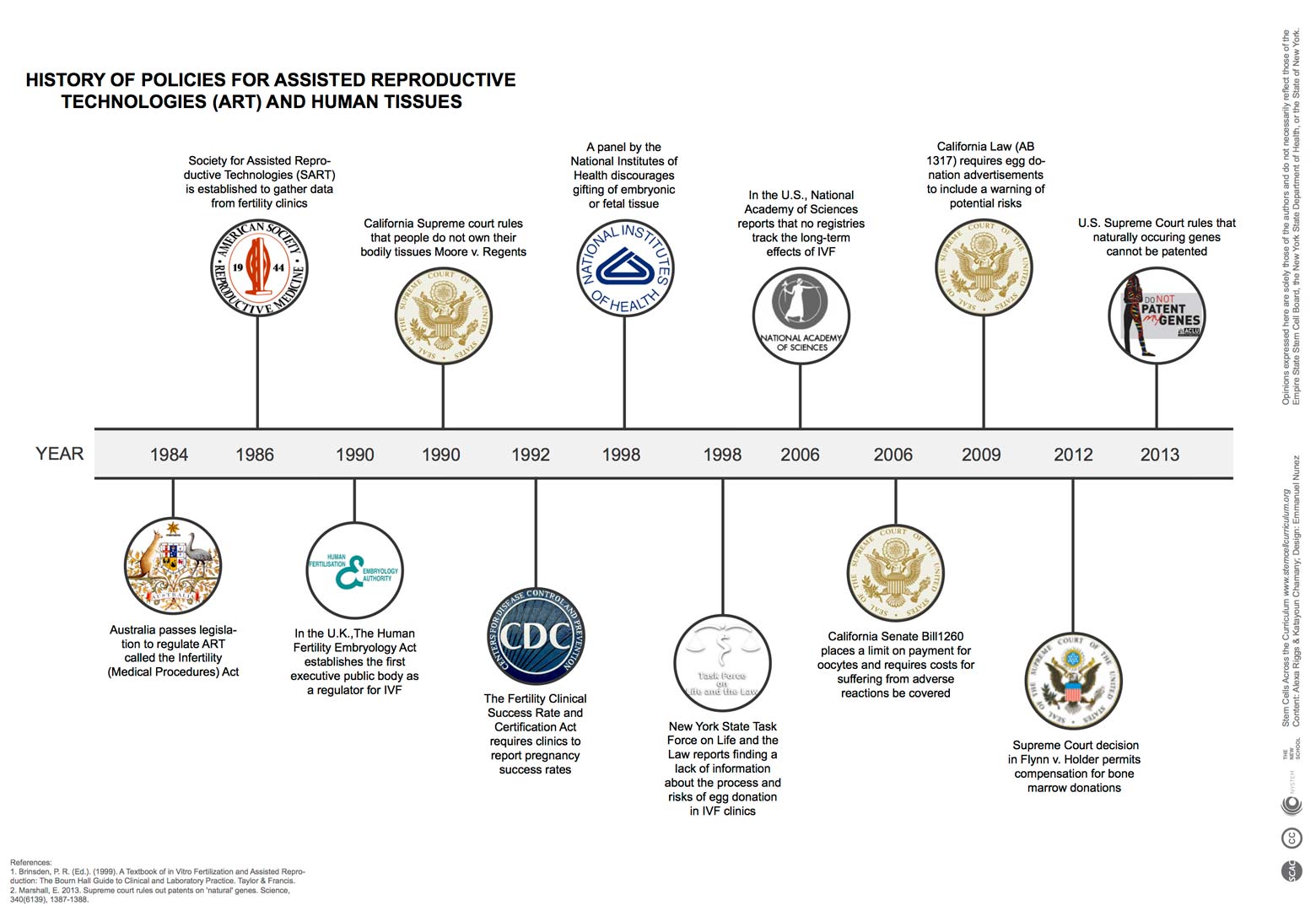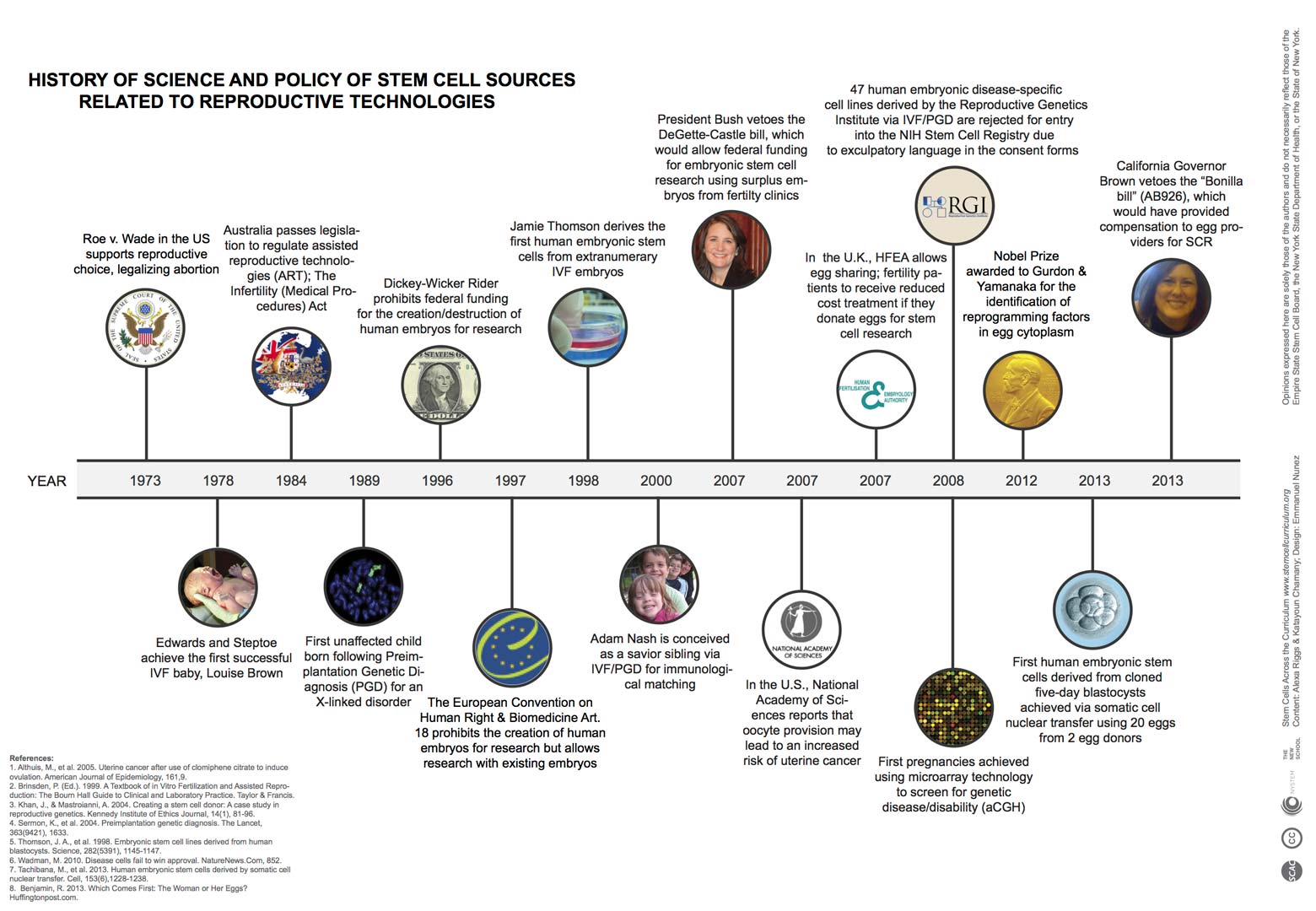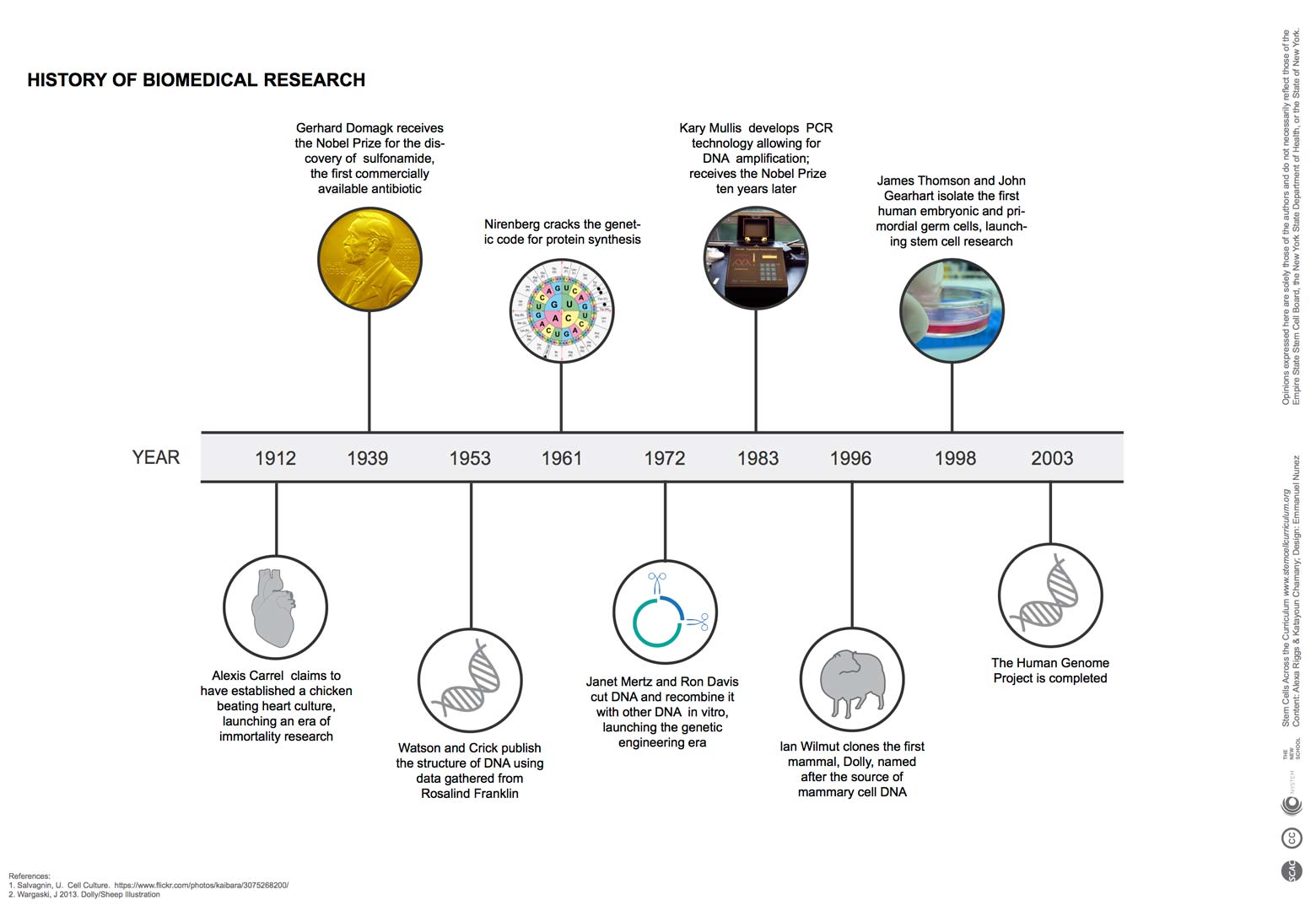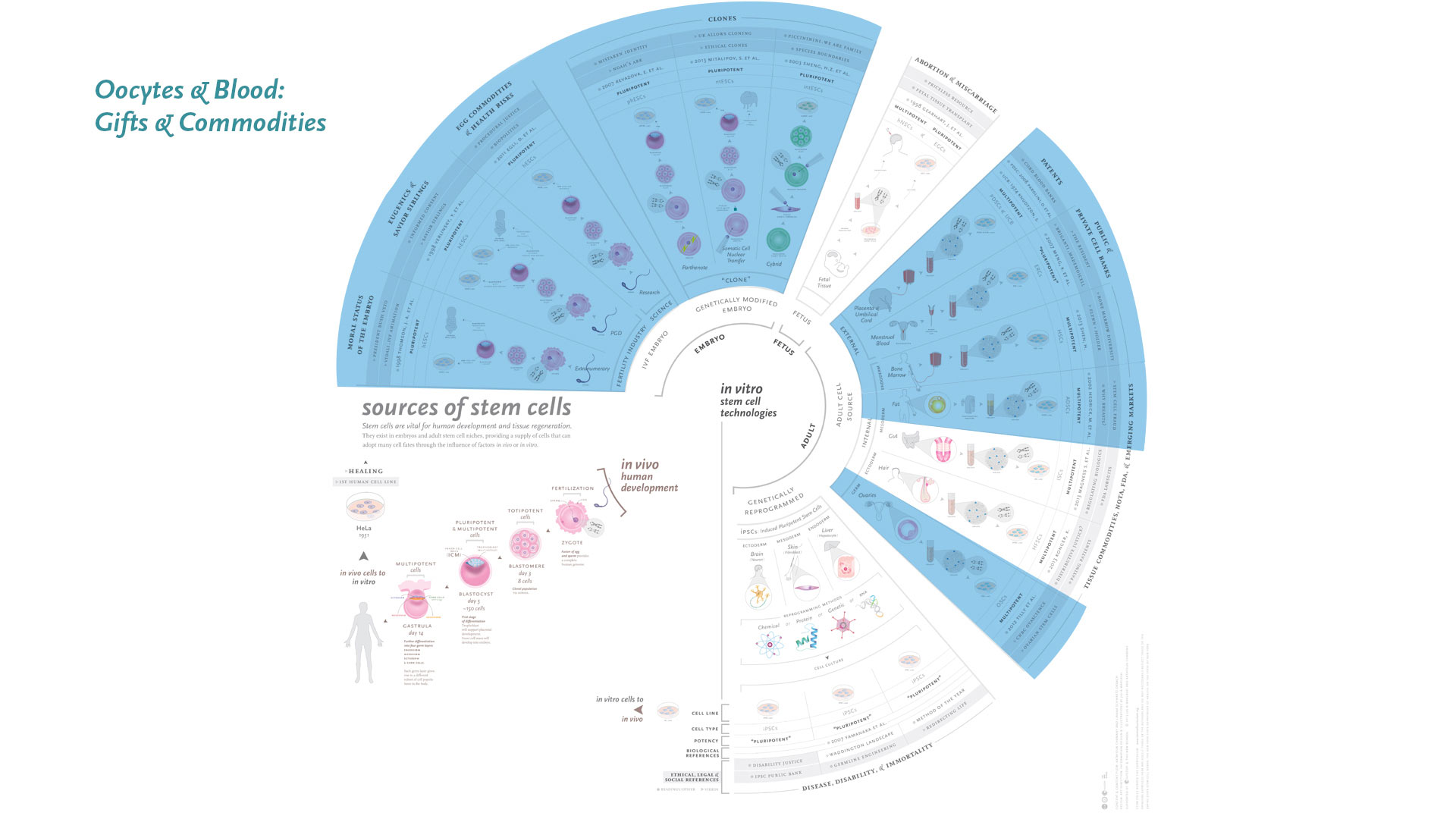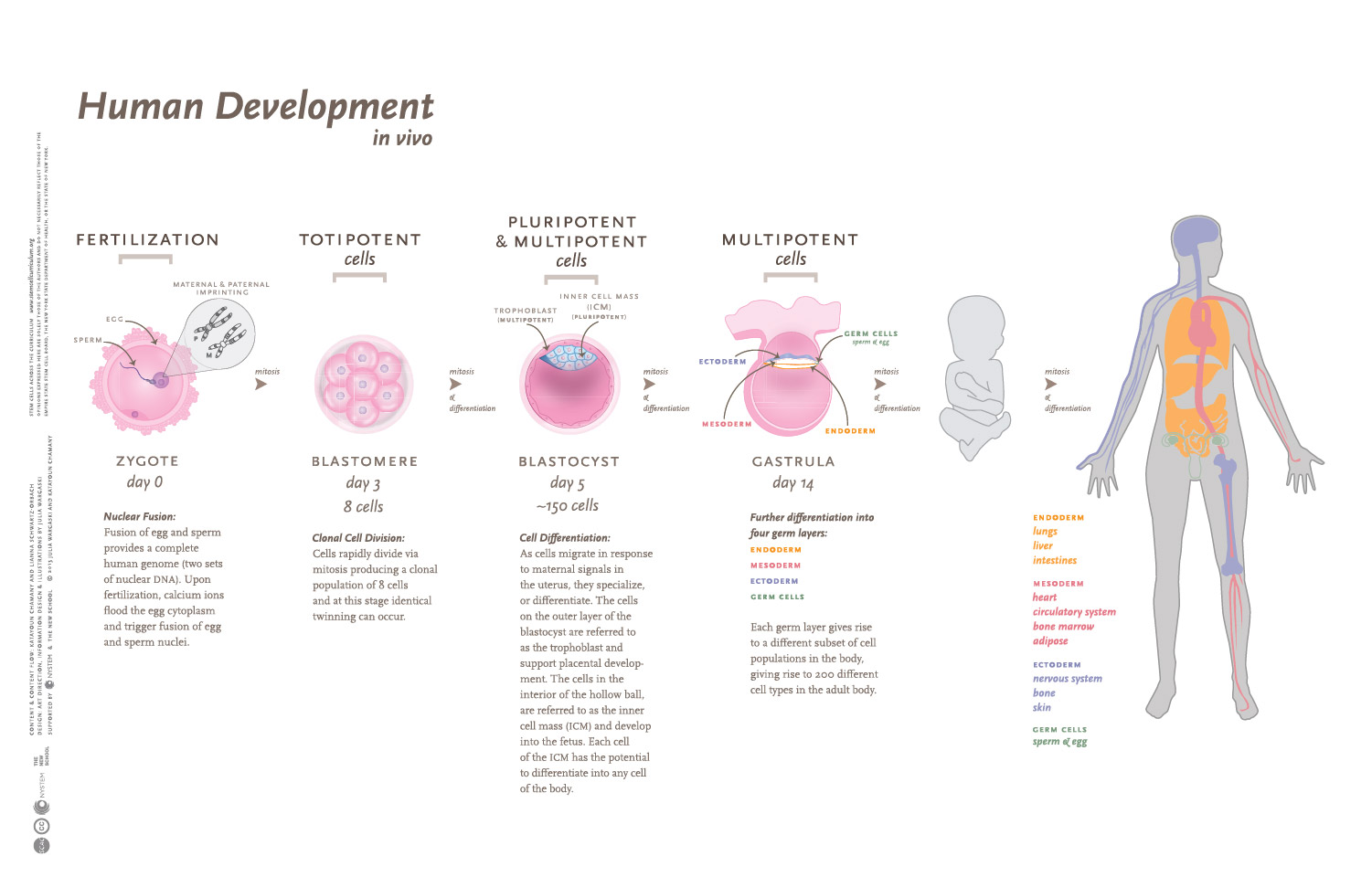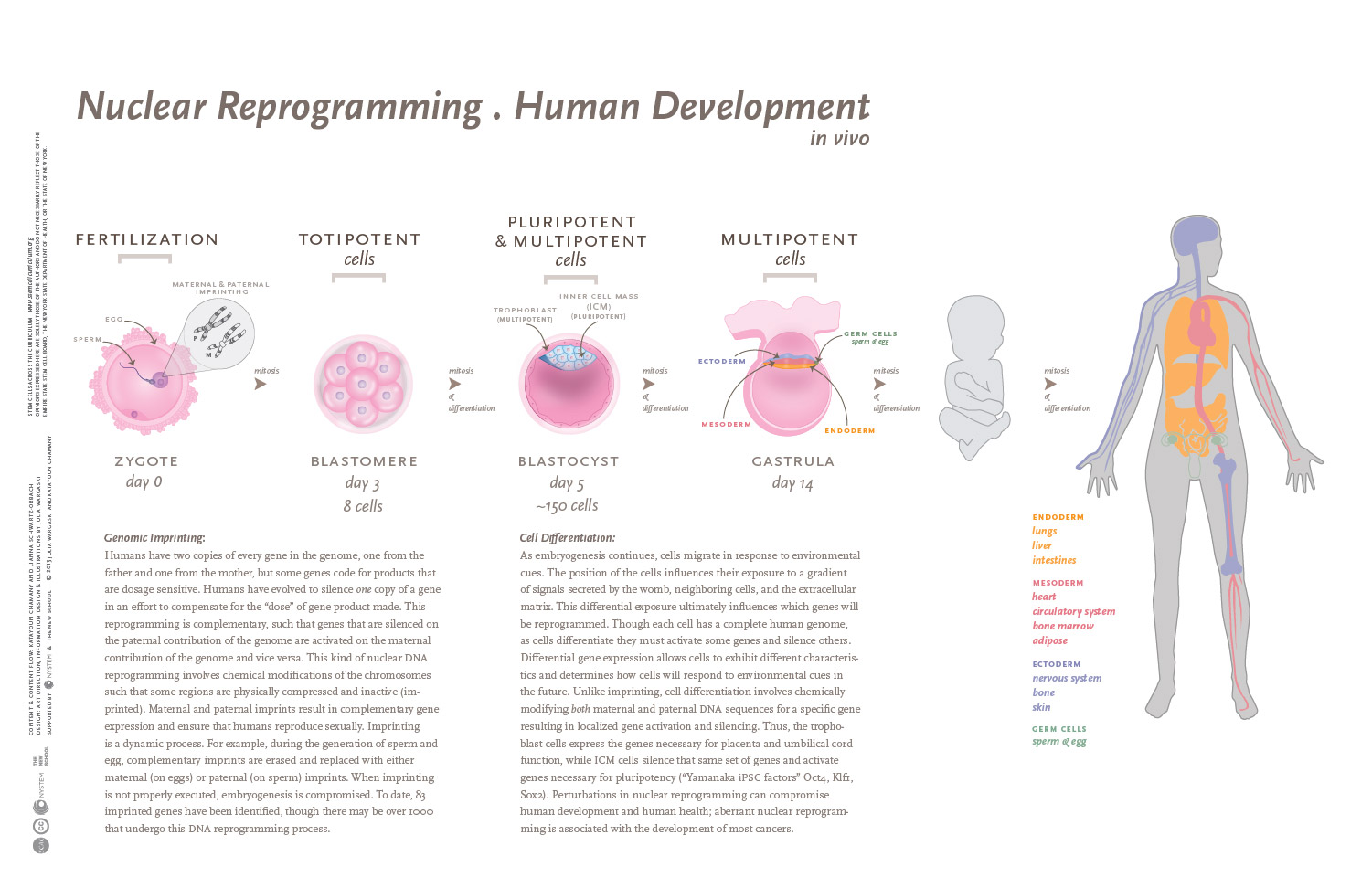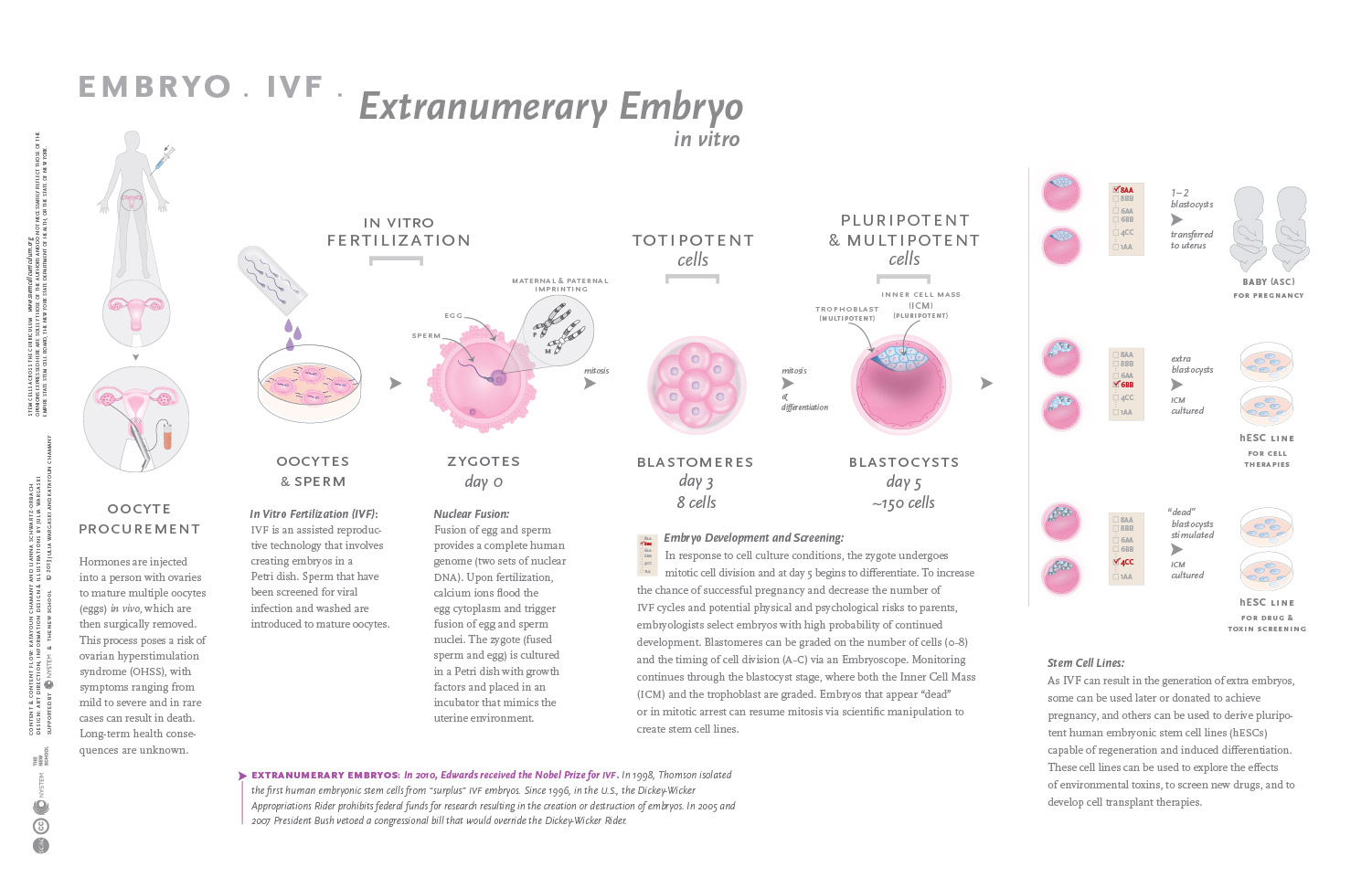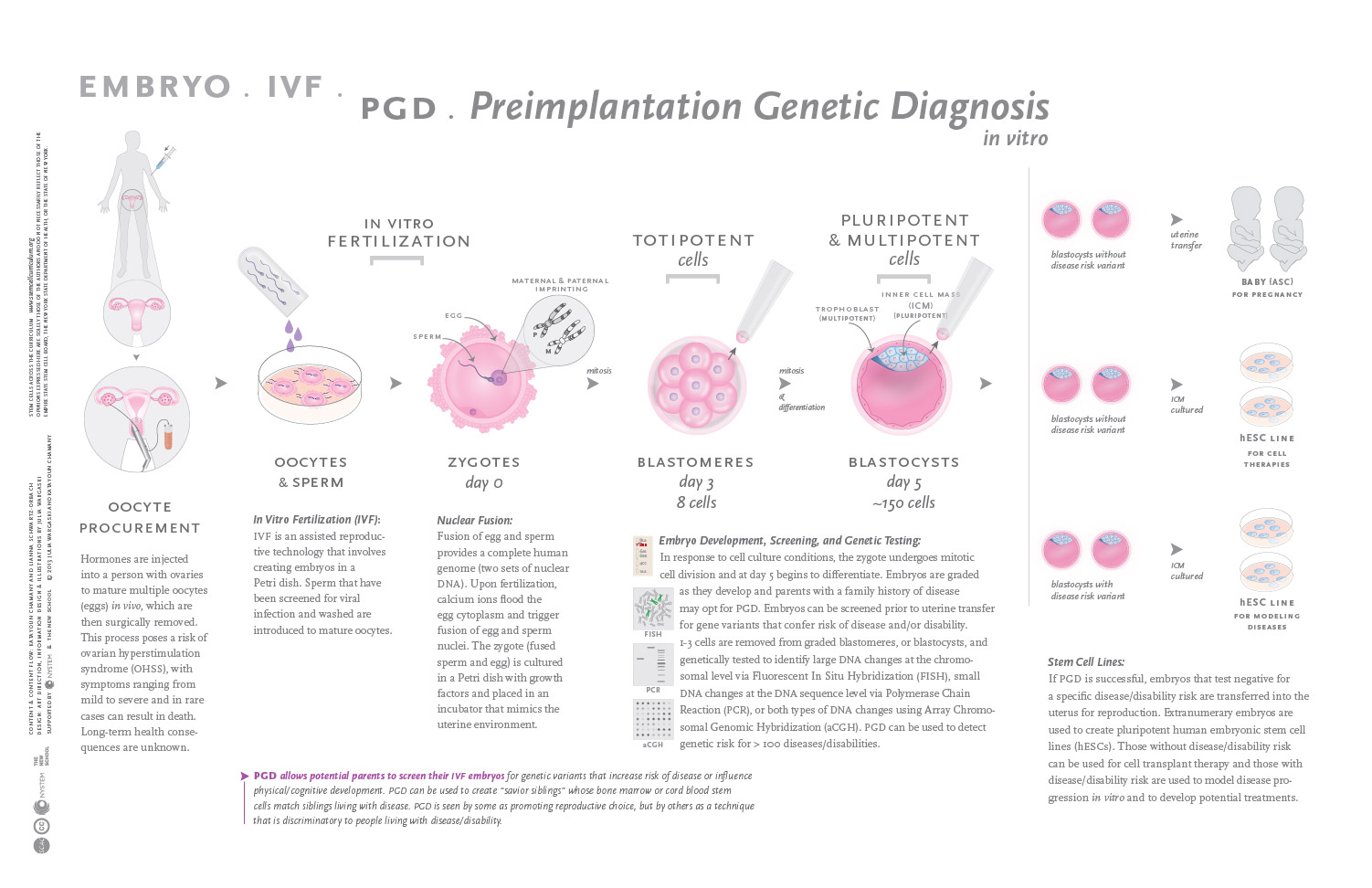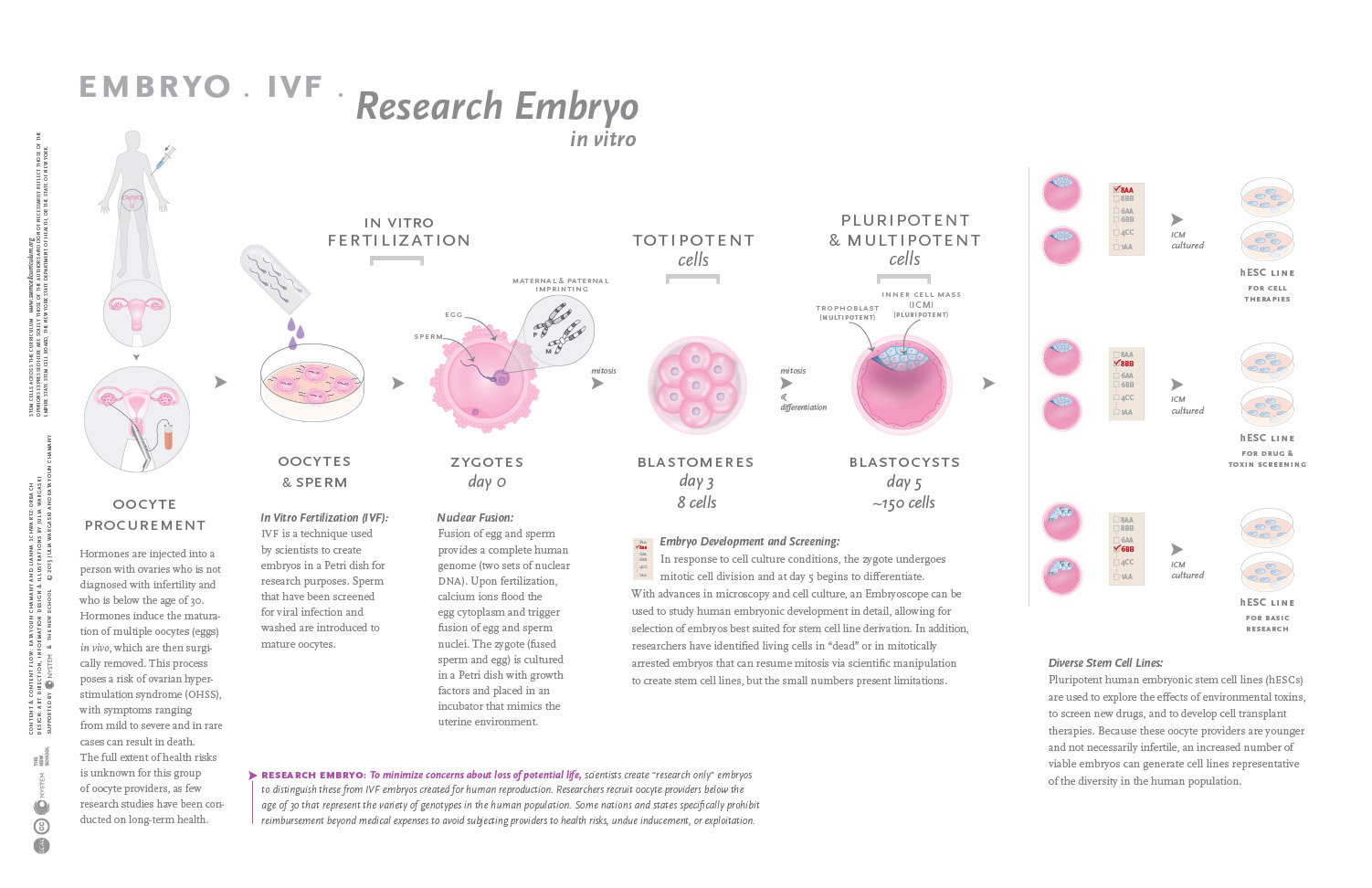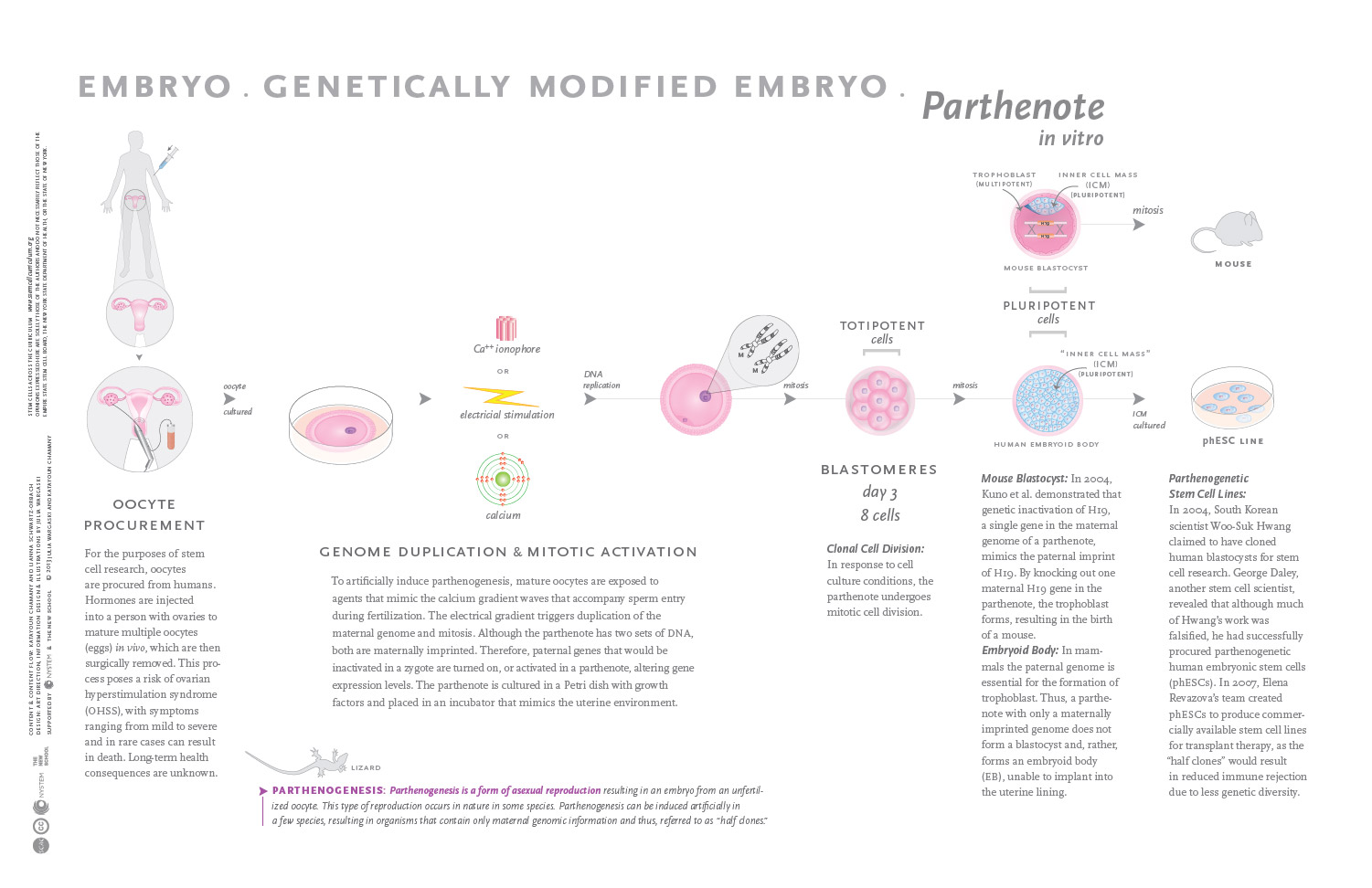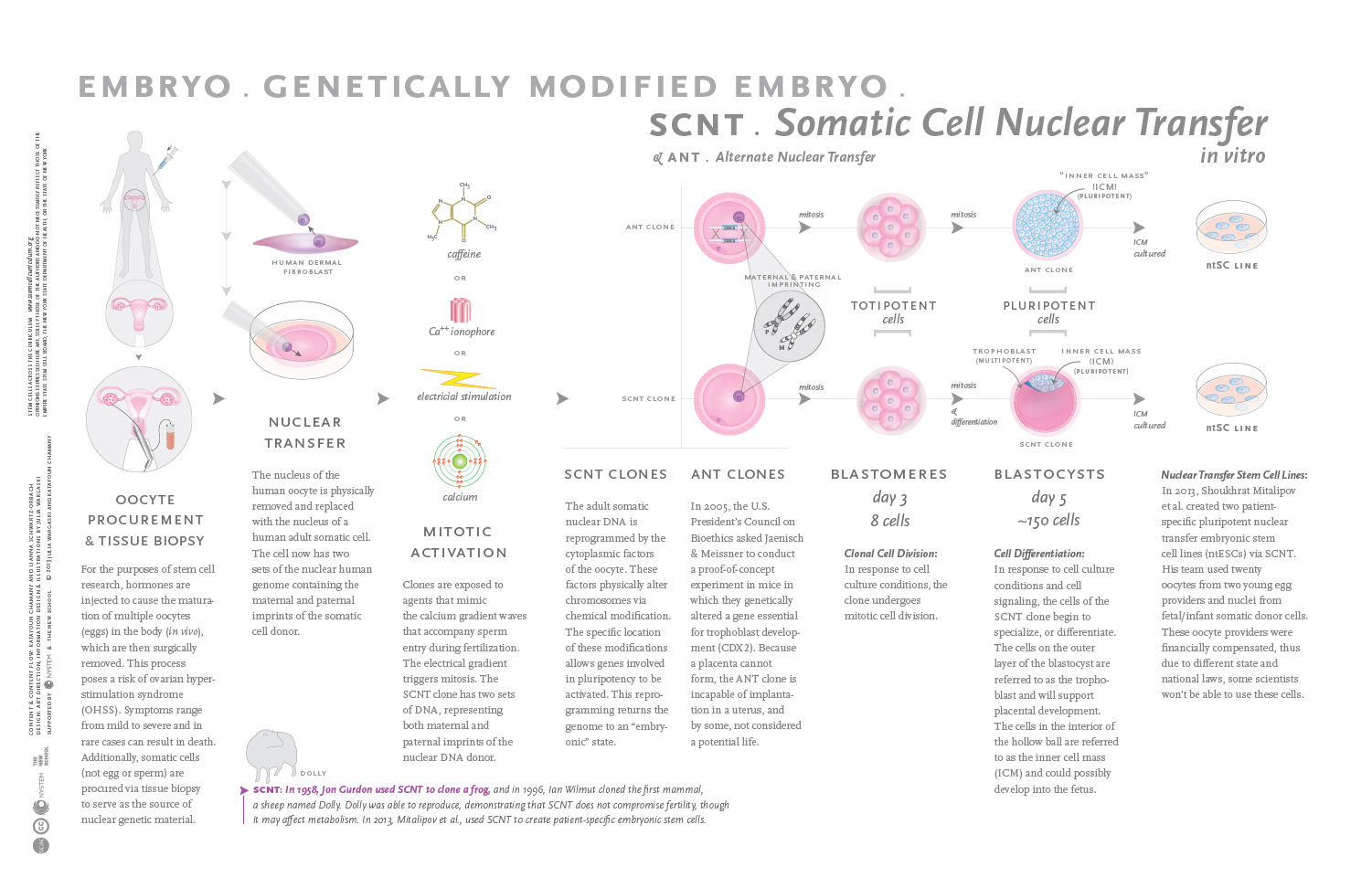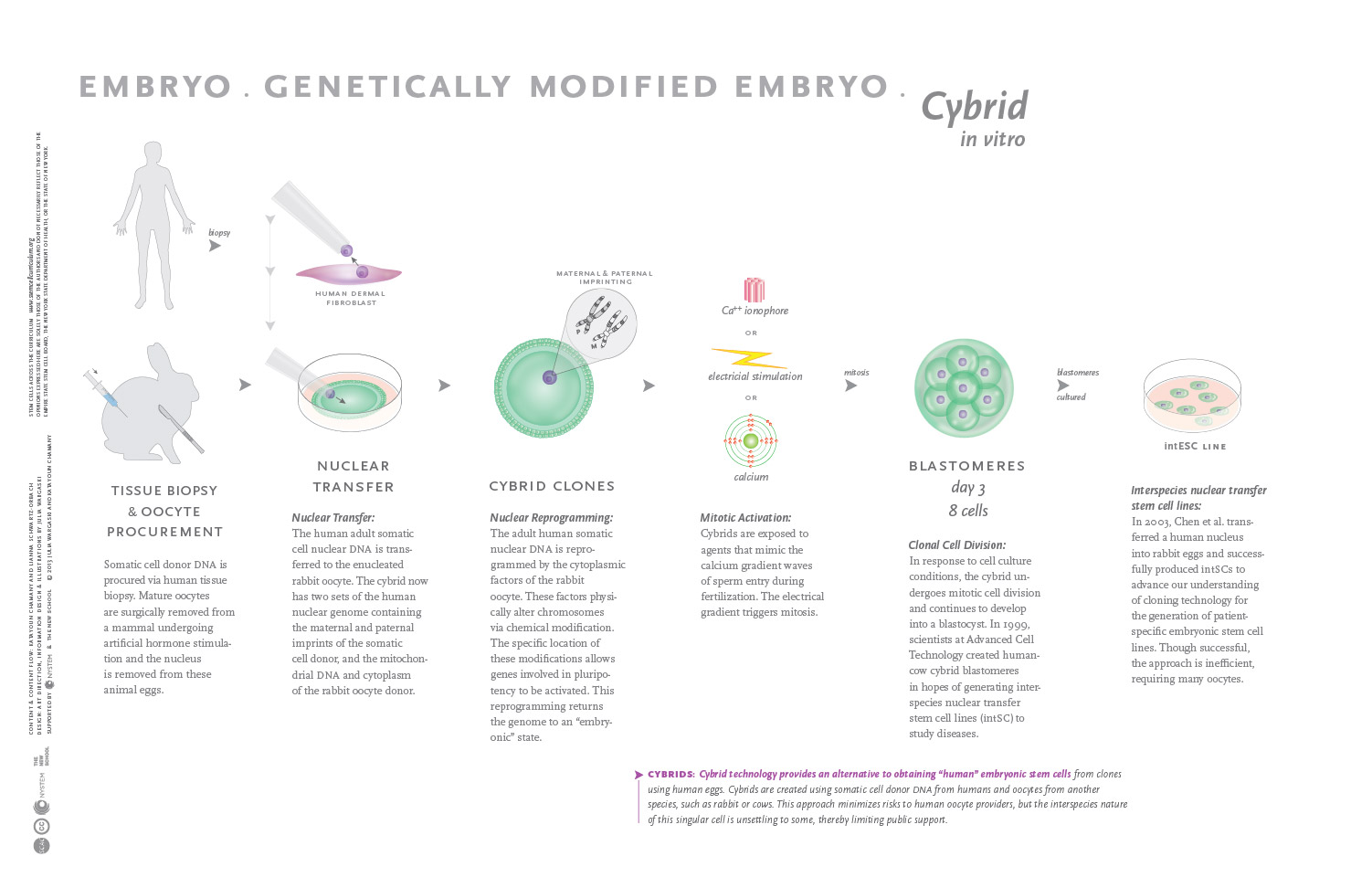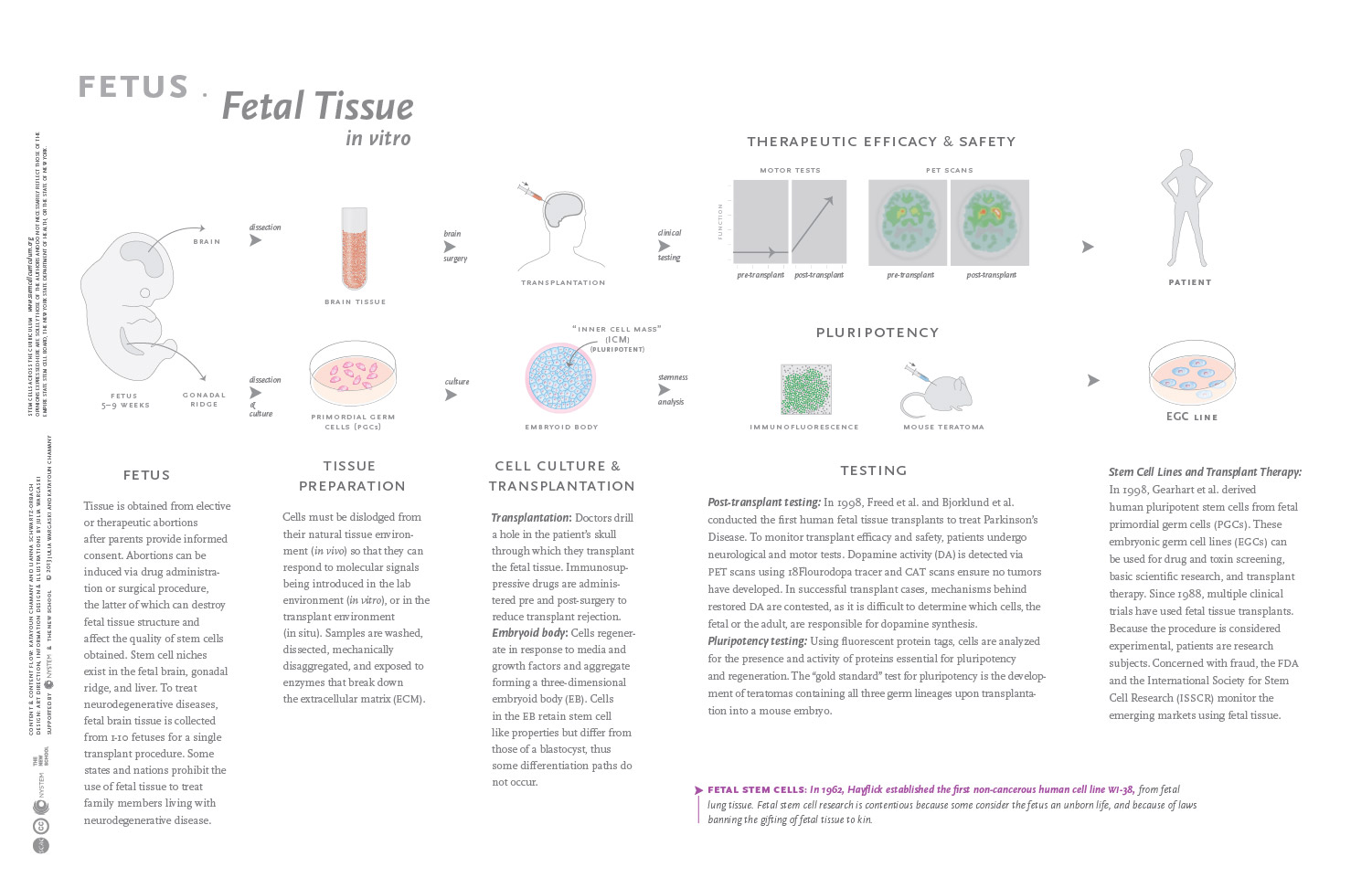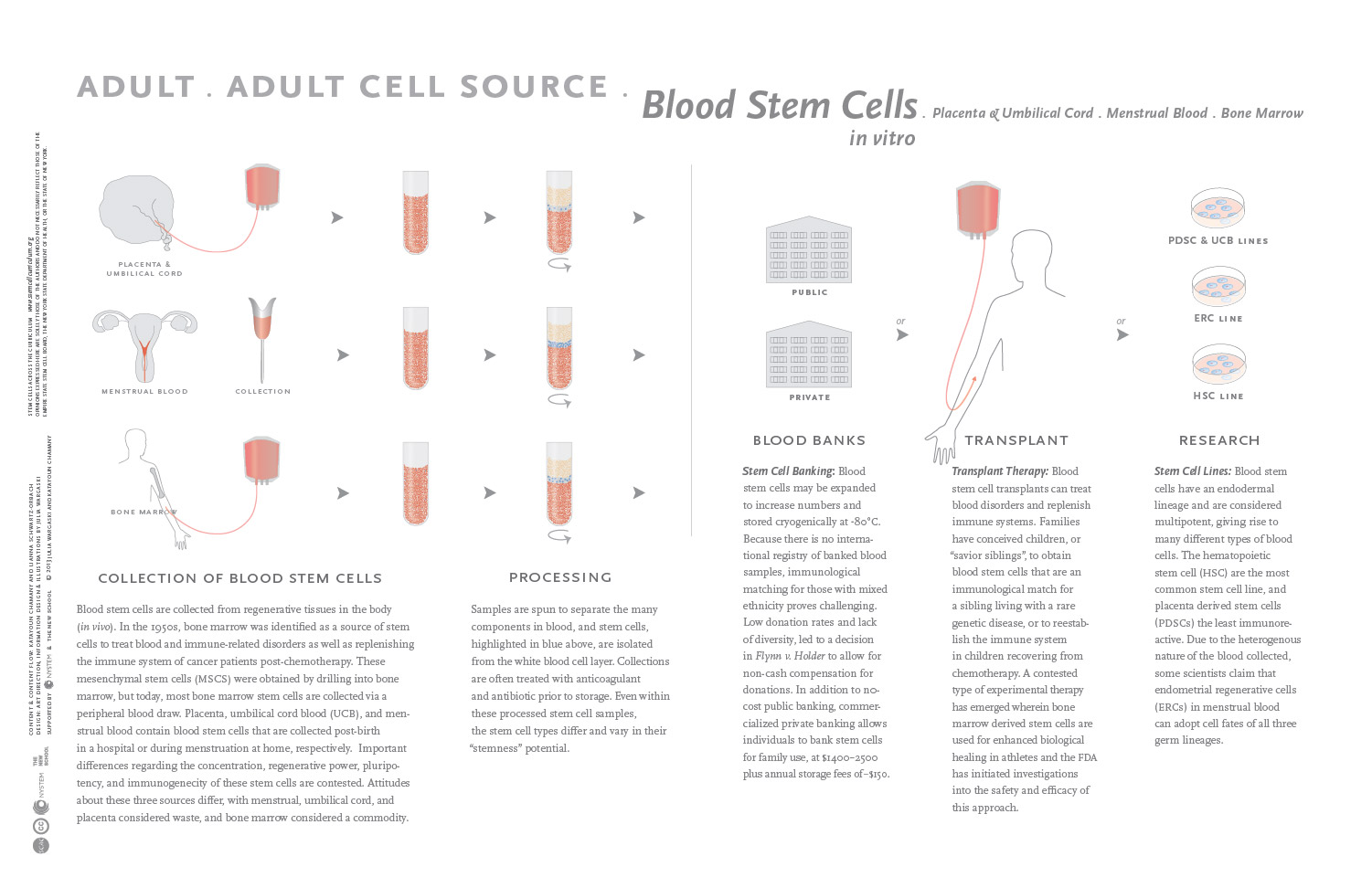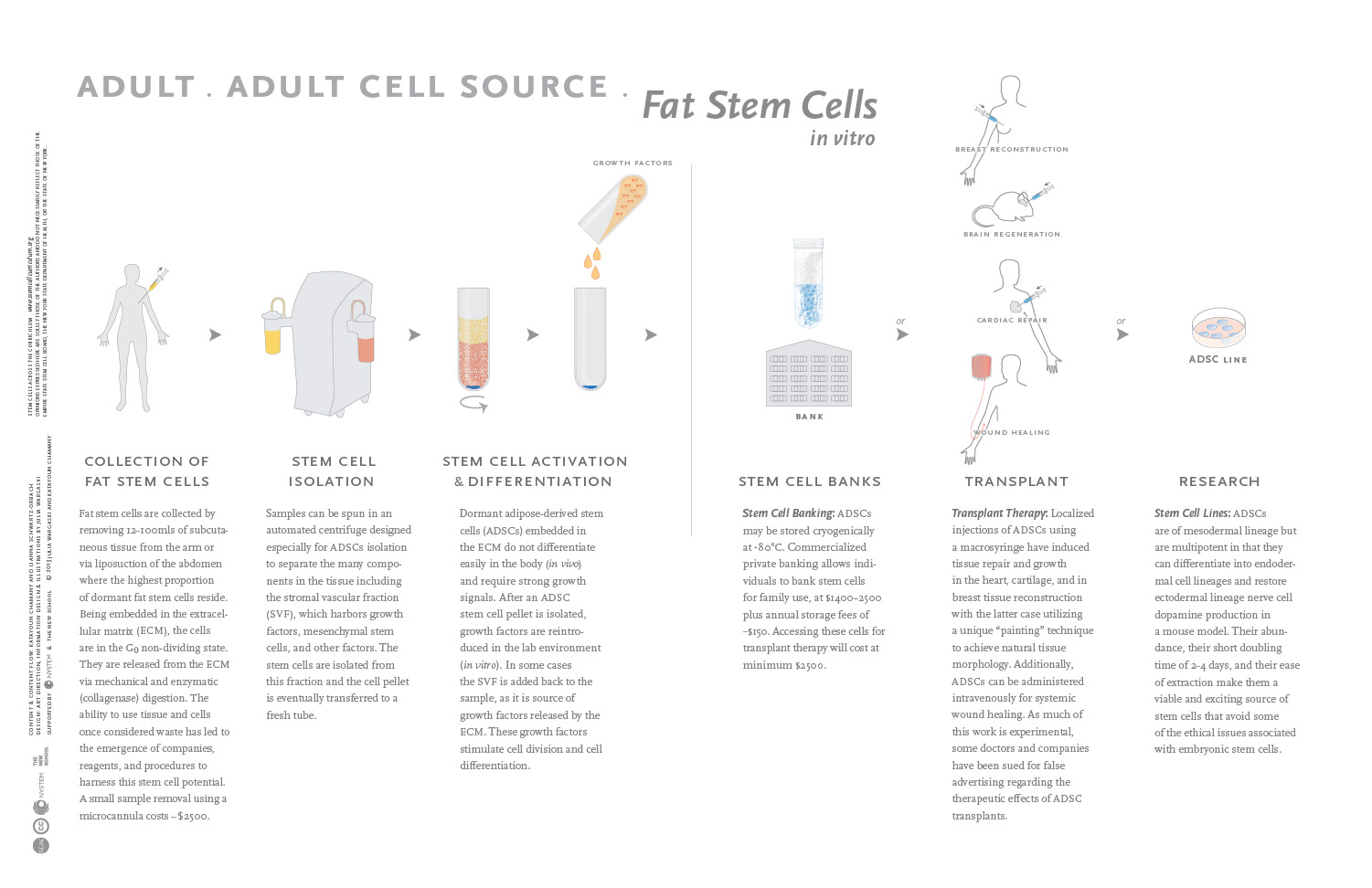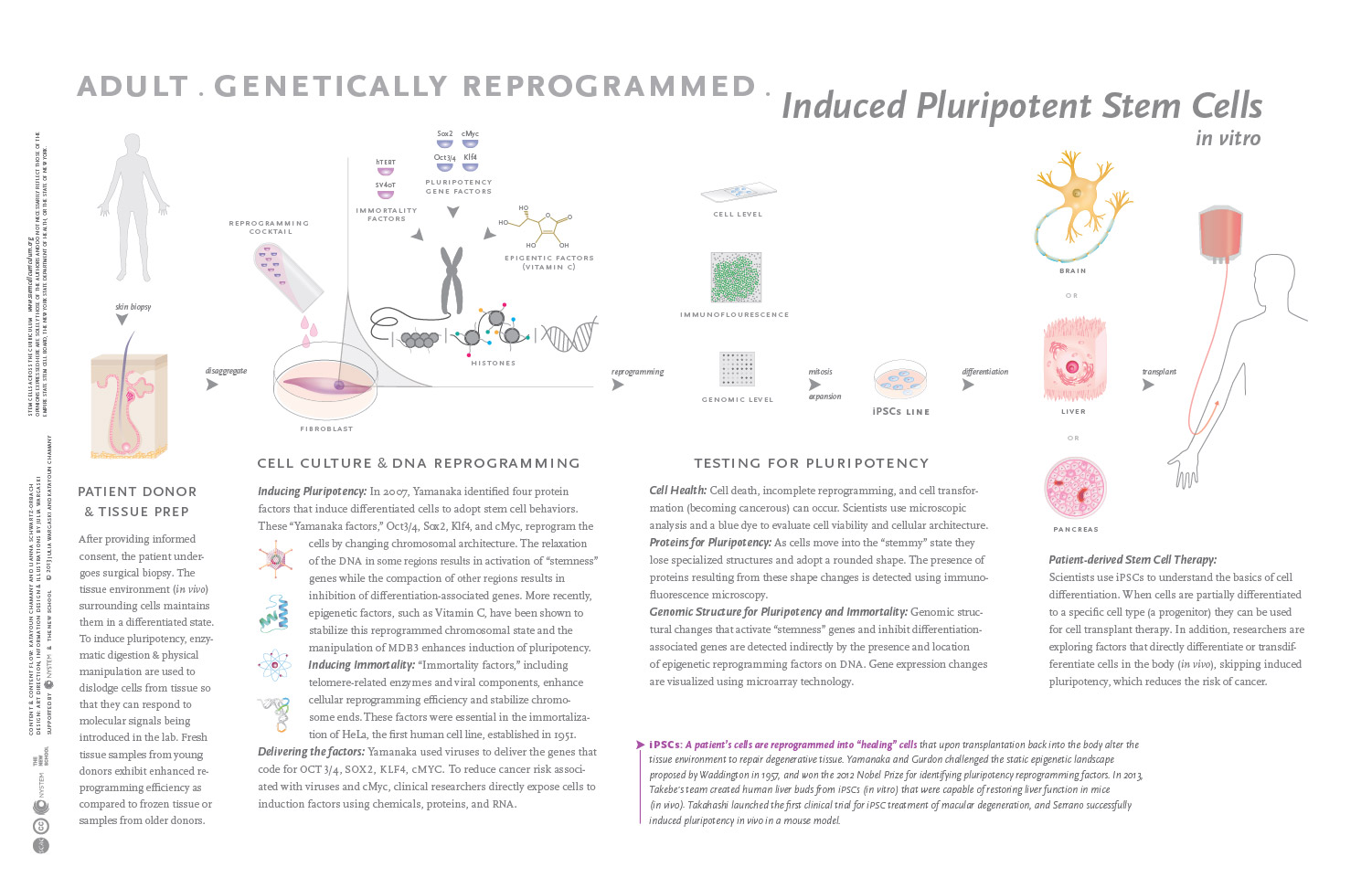Eggs & Blood: Gifts & Commodities
Synopsis
This module uses a feminist perspective to analyze why some cells and bodies are considered more valuable than others when placed in a gendered context. Though human embryonic stem cell research (hESCR) may lead to drugs and technologies to treat, or prevent, the onset of disease/disability, the work has also created a demand for human eggs (oocytes) turning them into a commodity. Additionally, the emergence of new biotechnologies allows for the exploration of other bodily tissues that can work in the service of SCR, such as placenta, menstrual blood, fetal tissue, fat, and ovaries. In this module we provide the basic concepts and principles of reproductive biology and cell differentiation, and utilize multiple frameworks to address the risks and benefits of practices and policies associated with procuring bodily goods. Applying the 7E- Learning Cycle (elicit, engage, explore, explain, elaborate, evaluate, extend), Learning Activity 1 asks students to engage in discussion, elicit prior knowledge from one another, and generate questions. Learning Activity 2 asks students to explore a variety of stem cell sources, and explain what they have learned by constructing and presenting visual narratives that compare the potential of each stem cell source as it relates to science and medicine. Learning Activity 3 uses a case-based model of learning, and asks students to elaborate on various stakeholders' positions by taking on the role of individuals who might benefit or be harmed by current, or emerging, biomedical practices related to SCR. In this last activity, having gained insight on multiple points of view, students evaluate and propose funding policies and regulations that can promote scientific innovation and promote social good. The module tackles these questions: Which biological characteristics of human eggs prove important for human development and SCR? Does compensation for egg and sperm provision support, or harm, social justice efforts? What kinds of health risks emerge with artificial hormone stimulation used in egg procurement? How can informed participation shape healthcare practices and policies? How can marginalized communities ensure access to both the process and outcomes of life science research to address their specific values, needs, and concerns? Please see our Permissions Page if you intend to use this curriculum. If you would like to adapt the curriculum for your use, please contact chamanyk@newschool.edu for MS word formatted files.
The Learning Activities, Teaching Notes, Primer, and Essential Resources were updated in July 2017. The Slides Sets will be updated in August 2017.Learning Activities
| Title | Assignments | Teaching Notes | Pedagogy | Duration | Course Type |
| Activity 1 Creating Egg Markets |
Download | Download | Generating Discussion & Questions | 1-2 sessions | Introductory |
| Activity 2 Evaluating Sources of Stem Cells |
Download | Download | Constructing Visual Narratives | 1-2 sessions | Intermediate to Advanced |
| Activity 3 Eggs & Blood: Gifts & Commodities Case Study |
Download | Download | Role-play & Policy Proposal | 2-4 sessions | Introductory to Advanced |
Essential Resources
The module provides an interdisciplinary set of resources that are organized by conceptual themes as can be seen in the graphic representation below and in the text based list in pdf. We have curated a list of Eggs & Blood Essential Resources that include at minimum one brief article and one more in-depth article for each of the conceptual themes. This list of resources is quite extensive, but if there is only one article to assign, it could be the Baylis article, which provides biological address of embryonic sources of stem cells including parthenogenesis, cloning, and chimeras, while deeply addressing ethical issues including moral status of the embryo and egg providers' health. Additionally, an expanded collection of over 35 resources are contained in the Eggs & Blood Annotated Bibliography, available from the Supplemental Materials in this Module. This annotated bibliography includes student commentary, keywords, and cross referencing to related resources. Selected news clips and films are available from the Media section the Stem Cells Across the Curriculum website, and additional resources are used in the Eggs & Blood: Gifts & Commodities Case Study. A more expansive set of resources is available from the REFWORKS Bibliographic SCAC database and is searchable by keyword. The collection of resources encourages learners to view stem cell research through different lenses that support critical thinking and analysis. In addition, short Video Guides provide learners with a brief set of references spanning film, theater, and media that focus on topics such as the personal story of Egg Providers, contemporary issues surrounding Bone Marrow and Cord Stem Cells, Embryos, PGD, Cybrids, Menstrual Blood Stem Cells, Informed Consent and research with Human Subjects.
Timelines
A collection of visual timelines present the evolution of advances in viewing eggs as commodities, payment for gametes for reproductive purposes, payment for gametes for stem cell research, IVF technology, sex cells created outside the body, policies and laws guiding assisted reproductive technologies and human tissue research, and the role of reproductive technologies and stem cell research. Six of the timelines provide more detail regarding each of these areas, while, The History of Science and Policy of Stem Cell Sources Related to Reproductive Technologies, provides a combined view highlighting sixteen important events that reflect the disparate and yet dependent progression of policy, science, and social attitude towards female biology. Additional timelines regarding disability justice can be accessed from the Timelines under Media and Infographics.
Infographics
Because there are many ways to learn and increasing amounts of content to master, infographics can assist learners in understanding this field of research across time and space. The graphics allow large amounts of content and data to emerge from the page in ways that help learners organize and retrieve information as needed. A Sources of Stem Cells Radial Infographic allows for quick comparison of the embryonic, fetal, and adult stem cells and several ZoomGraphics spanning human development, nuclear reprogramming, IVF, PGD, parthenogenesis, SCNT cloning, cybrid technologies, and adult stem cells sources are available as .pdf documents and serve as mini chapters on each topic.
Slide Sets
Supplemental Material
Primer
The primer associated with this module provides a comprehensive background regarding the biological and social dimensions of 1) the unique biological properties of oocytes in reprogramming DNA during embryogenesis 2) risks and benefits associated with providing oocytes and blood for research, 3) policies and regulations associated with embryo and stem cell research, 4) implications for society of creating markets for human tissue, and 5) feminist responses to oocyte procurement and other bodily tissues for stem cell research.
The primer can be accessed in two ways. The Atavist web-based Eggs & Blood: Gifts & Commodities Primer supports an interactive experience with embedded media, images, podcast, and links to related resources in the Stem Cells Across the Curriculum site. The primer was updated July 29, 2018 and contains a Table of Contents (TOC) accessible from the Atavist version in the left top corner. A faint arrow at the bottom right corner allows the user to navigate through the primer.
A pdf version with hyperlinked text is also available from the download link below.

